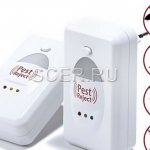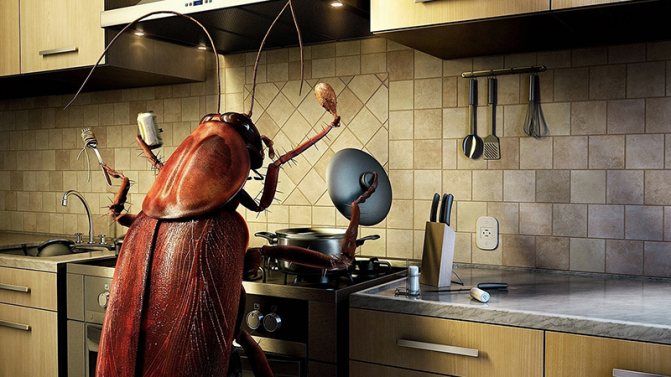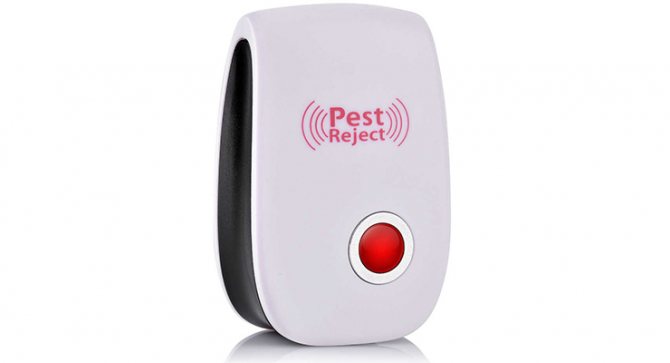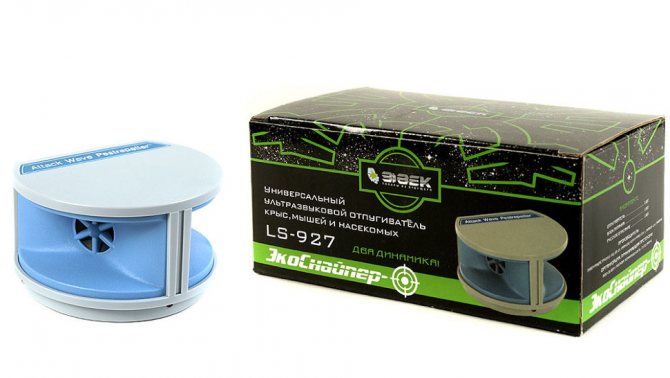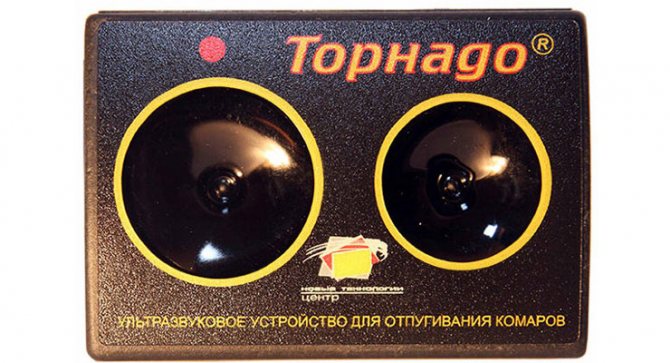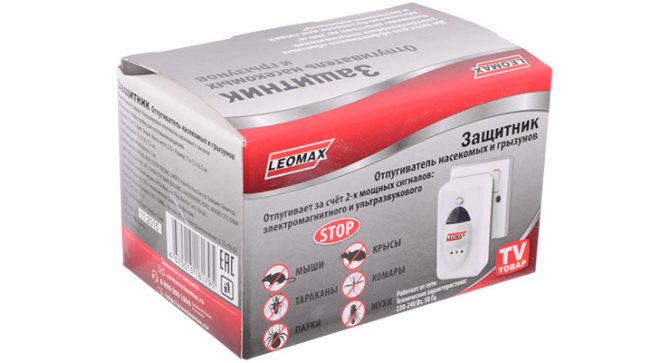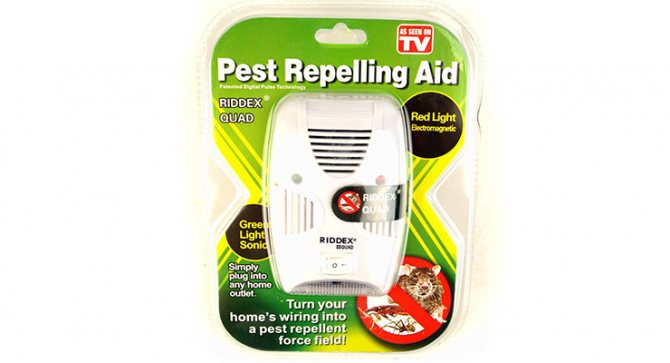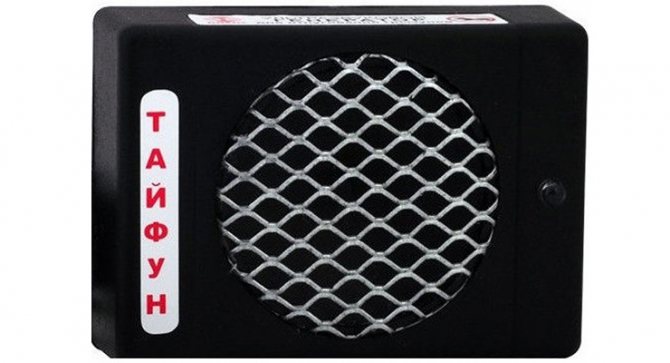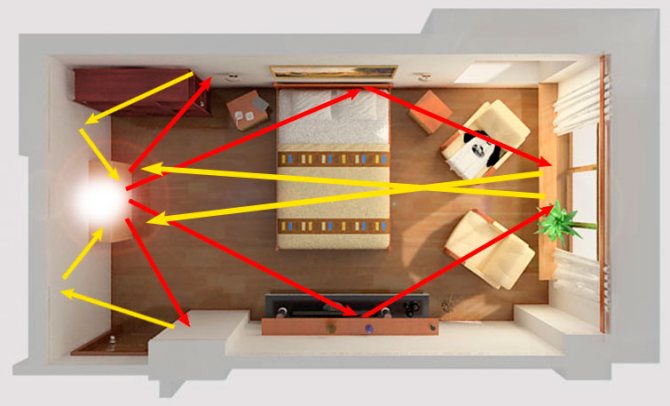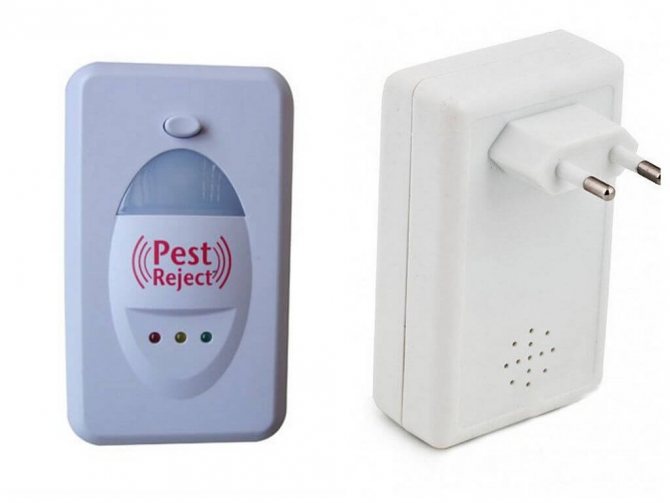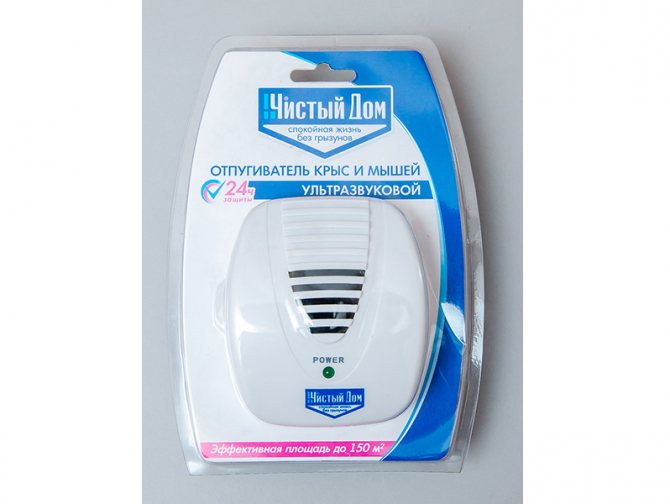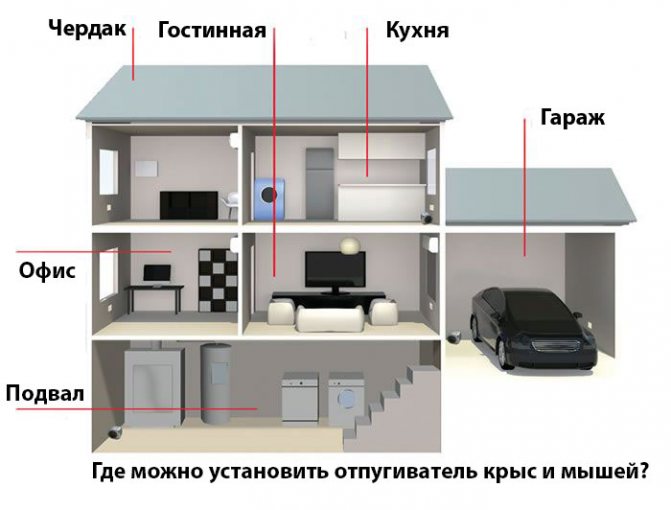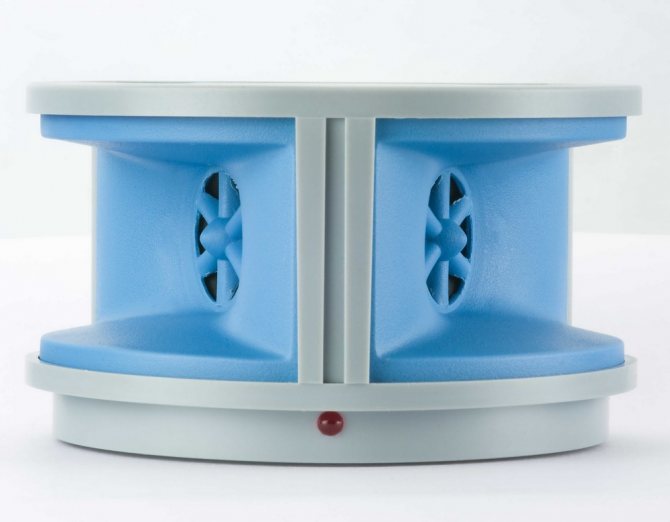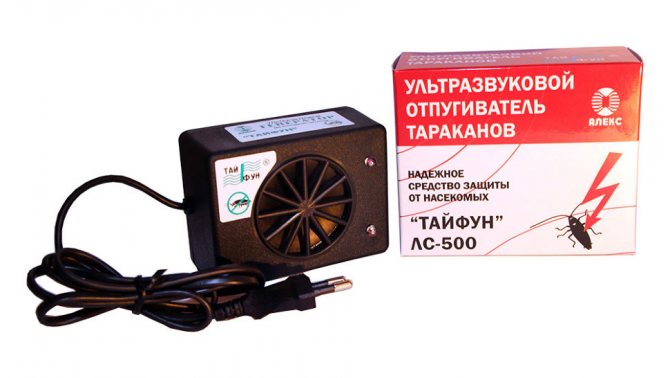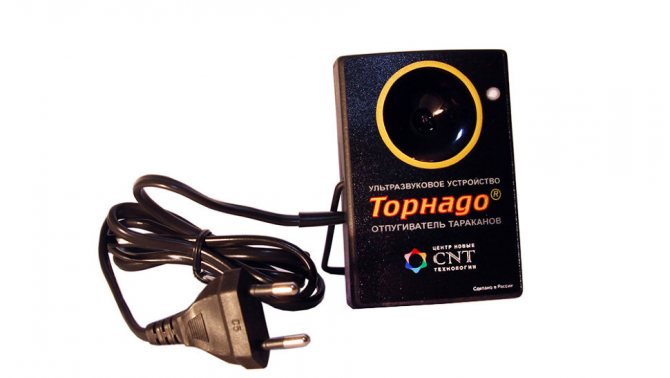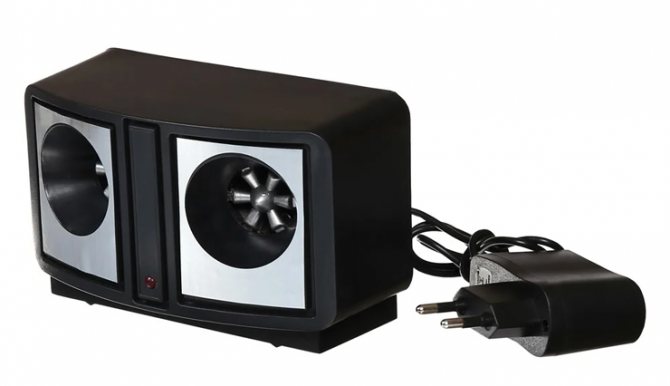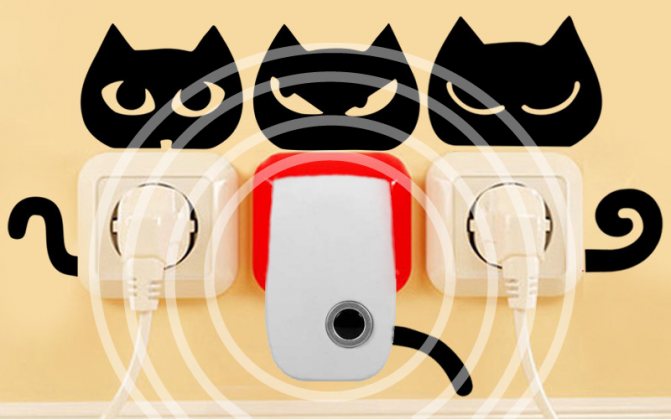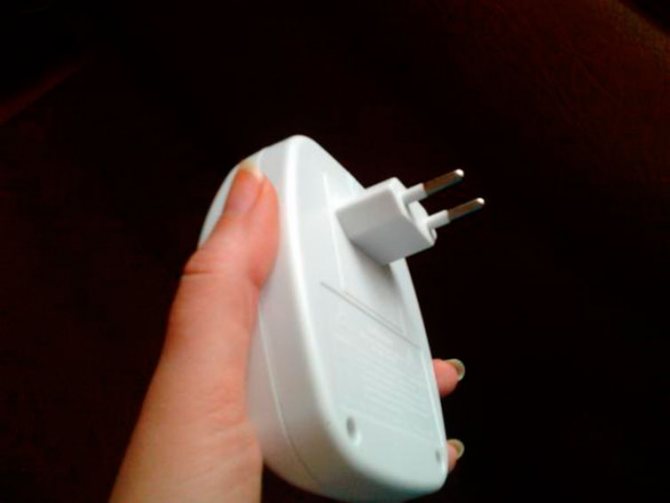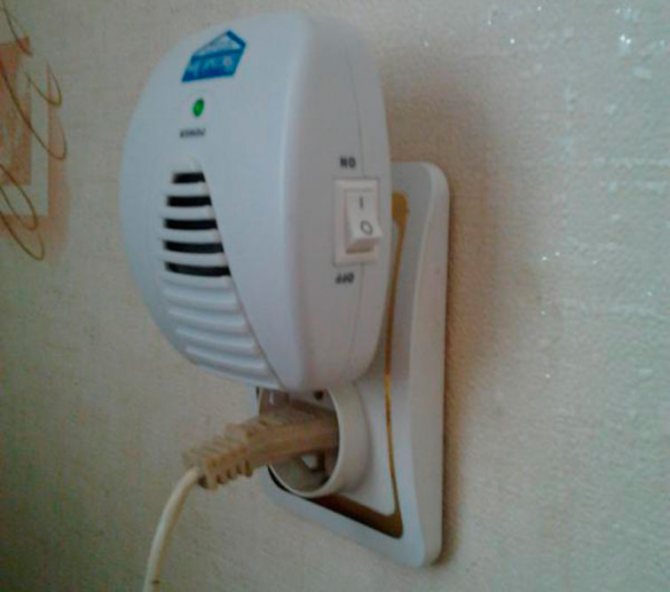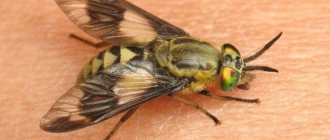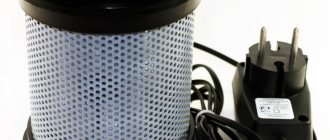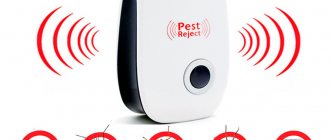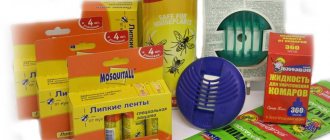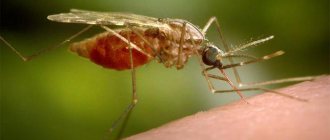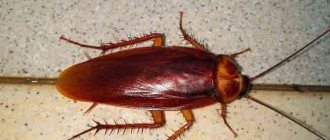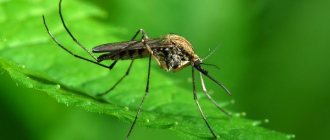Electronic and ultrasonic insect and rodent repellents (Riddex Plus, Pest Reject and similar devices) are innovative means for effective protection of premises from pests. Such devices are absolutely safe for people and pets (except for rodents), do not cause difficulties in use and allow you to get rid of "uninvited guests" without the use of dangerous chemicals, mousetraps and other "inhumane" means.
Repellers do not kill pests, but only affect their nervous system and create an unbearable atmosphere for them in a house, apartment, office or other object with electrical wiring in the walls.
Rodents and insects, under the influence of electromagnetic pulses and ultrasonic waves, rush to leave the protected premises and no longer return to them.
The most effective scarers of double (pulse-wave) action, because:
- ultrasound acts in an open space in rooms;
- electromagnetic pulses are transmitted through electrical wiring and expel pests from their secluded places.
But in order for the use of such devices to be as effective as possible, it is necessary to strictly follow the recommendations for their use.
How ultrasound affects insects
Insects are arthropod invertebrates that have a very hard chitinous cover, which is essentially an external skeleton. Chitin, by the way, in some insects is one and a half times stronger than steel in strength. Living tissue is located under the exoskeleton, which consists of layers of fat and hemolymph.
Chitin plates of insects can resonate, they vibrate even under the slightest mechanical effect of external conditions, including acoustic waves, and the gel-like composition of the tissue enhances this effect. Here we should recall the laws of physics, according to which mechanical vibrations are transmitted in a fluid at a much higher speed than in other media. For example, the speed of sound in air is just over 330 meters per second, and the speed of sound in water reaches 1485 meters per second.
Interestingly, the impact of high-volume sound waves on insects can be compared to the shockwave of the low-frequency spectrum of a subwoofer in a car or a bass guitar at a rock concert, which are not only audible but felt physically in the stomach.
However, unlike insects, human skin is an excellent sound absorber, and it dampens ultrasound, while chitinous resonators, on the contrary, amplify it. The result of such an impact is both painful sensations in arthropods and the failure of certain systems and organs in them.

The sound spectrum is divided into three areas, in our case it is the red sector
Among other things, ultrasound is perfectly reflected from dense, and especially smooth, surfaces, which include walls, ceilings, floors, wooden or plastic furniture in the room, which implies a continuous multiply amplified acoustic attack on insects anywhere in the room where there is such kind of radiation.
Conditions under which the device will actually work
Site requirements
Such requirements arise from the properties of ultrasound. The wave is reflected from hard surfaces and absorbed by soft surfaces.Therefore, in a house with stone walls, for example, ultrasound will only work in this room. If there is a lot of something soft in the room, for example, a full warehouse, then the ultrasound device will not be effective here due to the absorption of waves.
- A room with solid, thick walls reflects waves inward, thus enhancing the impact. In this case, the use of the device is relevant only for this room, since ultrasound practically does not penetrate into other ones.
- Large inconveniences for use will be created by unstable rooms filled with something, such as pantries, storage rooms and warehouses for grain or things. Waves will be absorbed and mice will hide under or behind these obstacles, but not go away.
- Correct placement of the device is important, which should be in the middle of the room and propagate waves in all directions, and not in one direction.
- No food bait or food. Rodents will be attracted to food, despite the inconvenience of the ultrasound.
Requirements for the device itself
The repeller will actually work against rodents if the following conditions are met:
- The frequency of ultrasound must constantly change, and the wider the range, the better
- Ultrasound propagates from the device 360 degrees
- Power pressure over 100-110 dB
- The exposure area (one of the characteristics of the devices) corresponds to the area of your room (be slightly larger)
Only in the presence of all these conditions will the fight against rodents using ultrasound be effective.
Advantages and disadvantages
Using ultrasound to repel insects is a relatively new idea, and it doesn't work anyway. The versatility of ultrasonic scarers is an even more controversial fact, but such devices can theoretically be applicable to combat specific types of arthropods. In the end, even device manufacturers themselves often advise using the latter as additional control measures, along with pest control.
The positive qualities of ultrasonic insect repellents include:
- long working time,
- high efficiency,
- safety for people and pets,
- ease of use,
- no use of chemicals,
- low power consumption,
- the ability to cover large areas,
- versatility.
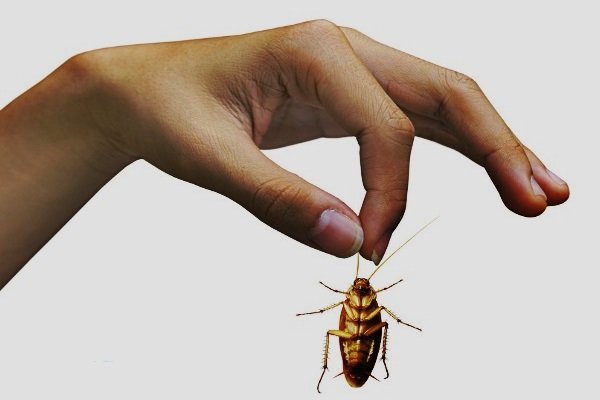

Based on numerous reviews, the advantages of ultrasonic devices are nothing more than an advertising stunt for manufacturers and sellers.
Among the disadvantages of ultrasonic scare devices are usually noted:
- low efficiency in cold air,
- the risk of the influence of very high power devices on humans and pets,
- sometimes the emergence of addiction to pests,
- high cost.
Operating parameters of some popular models
| Model* | Area coverage, m2 | Frequency range, kHz | Sound pressure level, dB |
| Chiston-2 | 300 | 20-70 | 110 |
| Chiston-2 Pro | 450 | 120 | |
| Tornado-200 | 200 | 18-70 | 102 |
| Tornado-400 | 400 | ||
| Tornado 800 | 800 | ||
| Typhoon LS-600 | 100 | 20-40 | 100 |
| Typhoon OG | 400 | 19-70 | |
| Typhoon LS-800 | 1000 | 20-40 | |
| Grad A-500 | 500 | 4-64 | 90 |
| Electrocat classic | 200 | 5-55 | 110 |
| Bioguard | 800 | 20-70 | 120 |
| TM-315 | 750 | 20-65 | 115 |
| WK-0600 | 325 | 2-50 | 95 |
| Tsunami 2 | 250 | 18-90 | 90 |
| Sonar-02 | 400 | 12.5-125 | 90110 |
- Beam pattern for all devices is - 360o
Types of ultrasonic scarers
Ultrasound of sufficient power negatively affects almost all types of living organisms, including animals, insects, birds and fish. It is also interesting that very high frequency sound waves, when used correctly, kill bacteria and certain types of viruses, and this is successfully used in medicine to treat a particular disease. Among the insect repellents using this technology, the most common are:
- stationary appliances powered by a standard electrical network;
- portable gadgets powered by batteries or accumulators;
- combined devices for home and field use;
- less commonly, solar-powered devices.
Insect and rodent repellents
It is known that the frequency range from 25 to 45 kHz causes the greatest discomfort in most rodents and insects. However, for example, cockroaches, mice and rats very quickly get used to unbearable conditions, which is why the frequency of sound vibrations of a quality repeller is floating, that is, it changes in tone with certain intervals.
Ultrasound generated by such devices has a destructive effect on the nervous system of insects and animals.
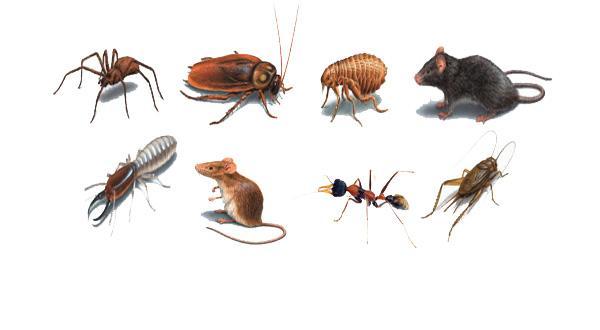

Versatile devices work against both insects and rodents
Universal emitters
Ultrasonic devices of wide application can be used with equal success against ants, mosquitoes, flies, cockroaches, bedbugs, lice and other pests and parasites. There are a lot of different variations of electronic ultrasonic insect repellents on the market, and, according to the developers, gadgets will soon displace poisons and fumigators due to their greater efficiency and environmental friendliness.
Anti-mosquito ultrasound
The ultrasonic mosquito repeller simulates the mating squeak of the male of these insects. Fertilized females that bite people do not tolerate this sound and try to avoid it in every possible way. Some models echo the squeak made by bats. Mosquito repellents are replacing chemical sprays, fumigants and creams.
According to the author, whether this is really so, it is difficult to say for sure, but electronic devices have certain advantages over traditional methods of protection, including the absence of chemicals and odor. In addition, the action of such repellents is directed exclusively at mosquitoes.
Devices from cockroaches
Domestic cockroaches do not have natural enemies, but they do not tolerate high-frequency signals. The problem is that cockroach control devices, due to the characteristics of the latter, have an increased flow of ultrasonic radiation, so much so that it can negatively affect people and pets.
Fly control devices
Familiar insects can drive anyone crazy. Not only are they overly annoying and annoying, but they are also carriers of all kinds of infections, some of which are very dangerous and even fatal. At the same time, an ultrasonic repeller can be a good way out of the situation, however, the effectiveness of these devices, however, like all repellents with ultrasound, judging by the reviews, is very doubtful.
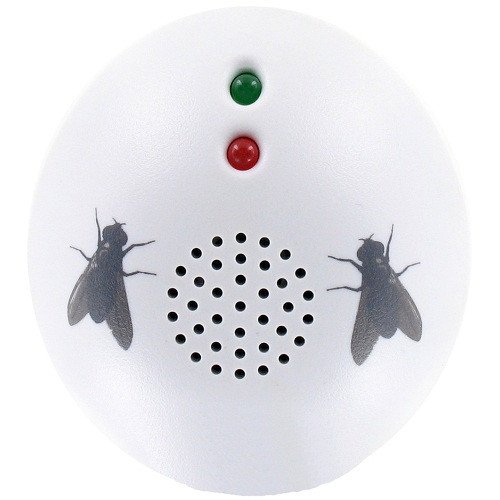

Often such devices are not scarers, but "scarers", that is, they do not drive away flies, but, on the contrary, lure
Ultrasonic gadgets for ants
As you know, small house ants in a human dwelling are a very unpleasant neighborhood. They can be killed or expelled both with the use of chemical pest control agents and with the help of specialized repellents. Such devices are distinguished by local action, but they are very few in the market. Universal emitters with an option to scare away ants, judging by the reviews, do not work properly.
In addition to the listed narrowly targeted gadgets for scaring away with the use of ultrasound, there are also:
- ultrasonic tick repellents,
- bug repellents,
- flea control devices,
- anti-spider devices,
- ultrasonic devices from wasps,
- scarers of moles,
- ultrasonic bird scarers,
- snake scarers,
- devices from bats.
Machine selection
When purchasing a device, you need to pay attention to the technical parameters (what material it is made of, how reliable the elements for connection are). It is important to read the reviews of real buyers and take into account the country of origin. American and Russian brands are clearly more effective than their counterparts from China.
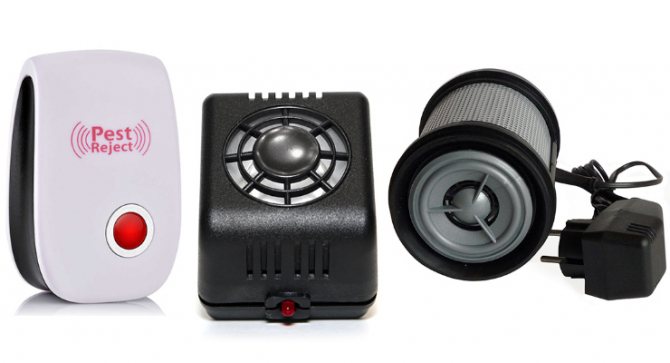

When choosing an ultrasonic repeller, it is worth taking into account the country of the manufacturer.
The main parameters that you need to be guided by when choosing a repeller are:
- Product power. To get rid of insects, a battery-powered device will be enough. If you have to fight rodents, then a network-powered mechanism will do.
- Temperature. The devices are designed for certain weather conditions. Any type of repeller can be used in the apartment, but for the street you will need a special model. Some brands are designed to work even with negative thermometer readings.
- Distribution area. You can find it out by reading the product specification. It should be borne in mind that the parameters of the area are indicated for an empty room, since various furniture reduces the efficiency of the device at times.
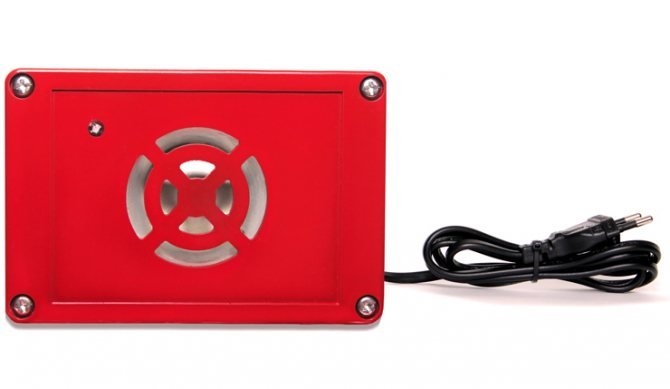

When choosing a repeller, it is worth considering the radius of its action. - Power supply. It can be batteries, accumulator, solar battery or electrical network. There are models with a combined power system. This parameter should be taken into account if the device is to be operated outdoors. It is most convenient to use electrical devices in a house or apartment.
There are also secondary characteristics - network sensor and dimensions. Some scarers have a function by which the device turns on when dusk falls and mosquitoes begin to attack. Repeller sizes may vary. Some fit in the palm of your hand, others are quite large.
This video explains how the Ultrasonic Repeller works:
Instructions for use
The author of the article studied the instructions for use for several models of insect repellers and made the following conclusions.
Ultrasonic devices for repelling insects, as a rule, do not require additional measures to prepare them for work. Batteries or a rechargeable battery are inserted into an autonomous device, a network gadget is connected to an outlet. Most manufacturers recommend that the device be switched on continuously for a certain period of time, depending on the model. A high-quality product does not have the peculiarity of overheating, emitting extraneous noise and emit an unpleasant odor. Usually, crawling insects leave the house after one to four weeks, and then connecting the device is necessary for preventive purposes.
Video: testing ultrasonic emitters of different models
It should be borne in mind that the above figures are not accurate and depend on the make and model of the repeller. In addition, it is necessary to take into account the workload of the room with furniture, soft or hard objects, partitions, and other interior items. The device is installed according to the scheme, as close as possible to the image below.
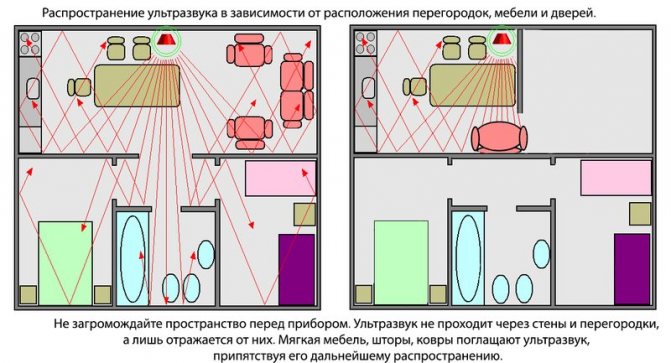

When installing an ultrasonic insect repeller, follow this scheme and recommendations
Varieties
The most popular types of bed bug repellents:
- ultrasonic;
- electromagnetic (magnetic resonance);
- combined electronic devices.
Ultrasonic
Ultrasonic repellents are designed to drive out bedbugs using high-frequency sounds, which create rather uncomfortable conditions for these insects in the room. Ultrasonic emitters are effective against adults, they do not affect the eggs of parasites.
Therefore, after about 10-12 days, when a new generation appears, it is necessary to carry out repeated scaring.
The device works in this way: in the area covered by the radiation of the device, a
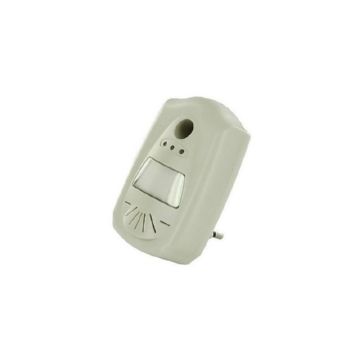

uncomfortable environment for a particular insect. The device generates high frequency waves. To increase the disturbance of bedbugs, the frequency range is automatically changed.This prevents the insect from becoming accustomed to ultrasonic waves. Staying in such conditions becomes unpleasant, uncomfortable and unsafe for bedbugs.
Considering that ultrasound cannot penetrate through closed doors and walls, you should not close the interior doors while the repeller is working, or install a device in each room. Also, avoid aiming the ultrasonic device at carpets or soft surfaces, as they can absorb sound waves. This can to some extent reduce the effectiveness of ultrasound exposure.
“I bought an ultrasonic repeller home. While I was working, the bugs seemed to run away, at least they were not visible and did not bite. And then they appeared again. Maybe we need to install more such devices in the apartment so that the result is more effective. Otherwise, the fight against these parasites becomes simply unbearable. "
Electromagnetic
Electromagnetic repellents strongly affect the nervous system of insects. With the help of exposure to electromagnetic radiation, bugs lose their orientation in space.
It has been proven that adults under the influence of electromagnetic waves can change their behavior, becoming less active. The feeling of panic and fear forces the bugs to leave their habitable territory.
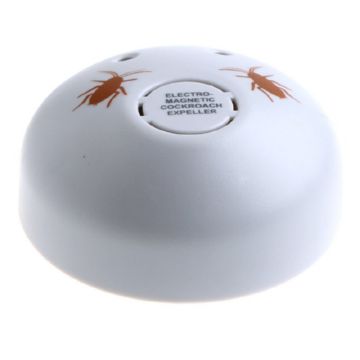

The principle of operation of the device: the device generates low-frequency electromagnetic waves. For humans, this will not bring any harm, as well as for devices that transmit signals. A few days after connecting the repeller to the outlet, the bugs will begin to leave the area, which is under the influence of magnetic resonance waves. Electromagnetic impulses spread to all rooms where there is wiring, and can penetrate into inaccessible places (behind the wall cladding, into furniture).
The device can be used in residential and business premises, warehouses, food production, hospitals, and agricultural farms.
The magnetic resonance repeller will also help prevent the unwanted appearance of cockroaches and other harmful insects, which usually do not begin to colonize an uncomfortable space.
“Cool thing, I highly recommend it. I can say that it works in one room, it doesn’t break into others. But after a month and a half, there are no more bugs in my room. This is the main thing. And the fact that they have spread somewhere outside my home, this does not concern me. "
Electronic
Electronic combined scarers combine efficiency in their work
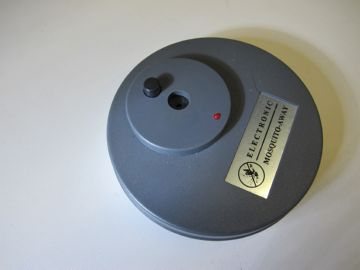

ultrasonic and electromagnetic devices and affect the organisms of harmful insects in a complex manner. During operation, such devices emit harmful magnetic and ultrasonic waves. Double-sided action significantly increases the effectiveness of indoor insect control. The frequencies of electromagnetic waves and ultrasound alternate, which ensures that insects do not get used to the effect of the repeller.
Principle of operation: on the one hand, low-frequency electromagnetic waves are generated, and on the other, high-frequency ultrasonic pulses are emitted. The unfavorable effect of waves on the nervous system of insects can cause them a feeling of panic and fear, forcing them to leave the territory where the repeller is working. This device does not use chemical or poisonous substances, is safe for human health, does not interfere with the operation of electrical appliances.
Safety rules and precautions
When using the ultrasonic transducer, you should follow the standard safety rules for household electrical appliances, including:
- do not plug the product into dangling or broken sockets;
- do not clutter up the turned on device with furniture, interior items;
- do not turn on the device when the ambient temperature is higher or lower than the values specified in the instructions;
- do not connect the gadget in high humidity conditions;
- do not use a defective repeller.
When using the ultrasonic insect repeller, you must also adhere to the following measures:
- do not place the device near a sleeping place;
- periodically turn off the device, especially when the latter overheats;
- monitor pets, if they have unusual behavior, you need to stop using the emitter;
- if the use of the ultrasonic device causes headaches or deterioration in the general health of people, it is necessary to stop using it.
Do repellents affect humans and pets?
This is perhaps the most pressing and unexplored question. Ultrasound has a higher vibration frequency than the low-frequency spectrum and is not perceived by the human ear. However, no one canceled the individual characteristics of hearing and the irritating effect of sound vibrations, including inaudible ones. Most likely, ultrasonic waves can still affect a person's condition, although often he does not realize this. This influence is mildly expressed in mood changes, headaches, which we do not attach significant importance to; in more severe cases, it can be panic, mild depression, diarrhea, nausea and vomiting.


Dogs as a result of the work of scarers can express both aggression and fear
Unlike humans, the effect of ultrasound on pets is more pronounced. Decorative rodents such as hamsters, guinea pigs and rats may experience anxiety, depression of the nervous system, and other disorders; parrots and other birds experience excitement and even fear; dogs and cats do not tolerate ultrasound, they can become more aggressive or, conversely, look more frightened than usual, and always try to leave the danger zone as quickly as possible.
Specifications
The mice and insect repellent design has a rectangular shape and compact size. At the top of the front panel there is a button that turns on the backlight. Below there are two indicators (red and green), which light up after the device is connected to the network.
In the lower part of the case there is a night light protected by plastic glass. The plug, suitable for all modern power outlets, is permanently attached to the rear of the repeller. In the instructions in Russian, Riddex is characterized by the following parameters:
- power consumption - 4 W;
- pulse frequency - 0.8-1 Hz;
- operating frequency - 50 Hz;
- optimal mains voltage - 90-250 V;
- permissible period of continuous operation - 24 hours;
- the maximum area of action is 200 square meters.


You should carefully read the instructions of the Riddex scarer in order to get maximum efficiency from the device.
It functions without any problems at different temperatures (from -30 to + 40 ° C) and air humidity from 20 to 90%. The gadget is fully certified.
DIY ultrasonic device
On a modern elementary basis, an ultrasonic autonomous insect repeller can be assembled by almost anyone; the main condition, according to the author, is the ability to read electronic circuits and work with a soldering iron. Among hundreds of similar solutions, it is worth paying attention to this for the simple reason that there is no need to painstakingly study the principle of operation of the entire device or its individual units, but you only need to find the necessary components, etch (cut) the tracks of the printed circuit board and solder the device. As you can see, the homemade repeller contains only thirteen elements, among which there are no expensive or difficult to find. You can order parts at any radio store or, for example, on the AliExpress marketplace.
The principle of operation of the circuit, like most similar devices, is based on the generation of sound pulses of a certain frequency and power.
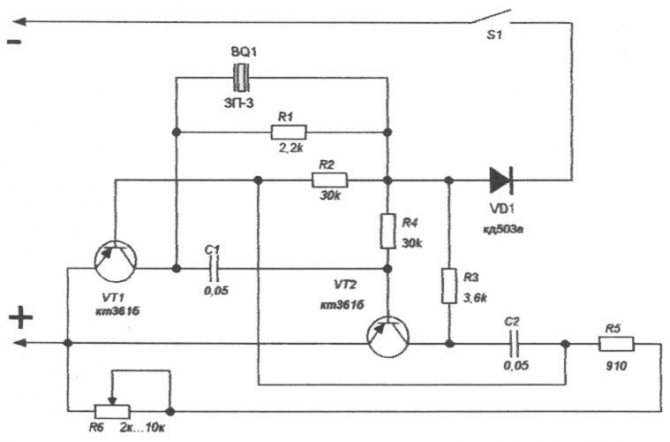

The device contains a minimum of components
The resistors used in the circuit set the operating points of the transistors, serve to limit the current and lower the voltage. A variable (trimmer) resistor is required to set the output frequency. The sound emitter is piezoceramic: both Russian and imported analogs are suitable. Transistors in the resonant circuit can be replaced with similar ones. Capacitors should be ceramic for the appropriate voltage with a small margin. The VD1 diode is necessary to protect against power overshoot, in principle, it can be omitted. Switch S1 turns the device on and off.


All tracks are separated taking into account the location of parts and ergonomics
If you have the appropriate skills and devices, you can make a printed circuit board, or solder everything with surface mounting, which, of course, is faster, but not so technologically advanced and convenient. Sometimes it is easier to build a device at all on the so-called "breadboard".
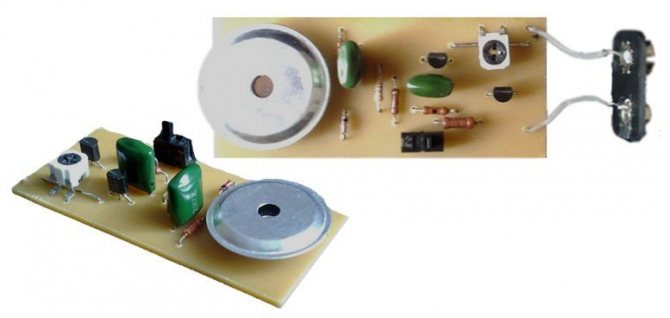

The assembled device looks rather diminutive.
It is recommended to use batteries or accumulators as a voltage source, but a power supply unit with an output of three to twelve volts can also be used. It should be noted that at a reduced voltage, the power of the device will correspondingly decrease.

